Microsoft Excel
Type of resources
Topics
Keywords
Contact for the resource
Provided by
Years
Formats
Representation types
Update frequencies
Scale
Resolution
-
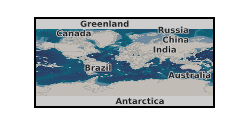
This dataset comprises raw carbon, oxygen and hydrogen stable isotope data on water (precipitation and terrestrial) and plant cellulose from Empodisma-dominated peatlands throughout New Zealand. This data has been published in two open access papers: Amesbury, M. J., Charman, D. J., Newnham, R. M., Loader, N. J., Goodrich, J. P., Royles, J., Campbell, D. I., Roland, T. P. and Gallego-Sala, A. V. 2015. Carbon stable isotopes as a palaeoclimate proxy in vascular plant dominated peatlands. Geochimica et Cosmochimica Acta 164, 161-174. Amesbury, M. J., Charman, D. J., Newnham, R. M., Loader, N. J., Goodrich, J. P., Royles, J., Campbell, D. I., Keller, E. D., Baisden, W. T., Roland, T. P. and Gallego-Sala, A. V. 2015. Can oxygen stable isotopes be used to track precipitation moisture source in vascular plant dominated peatlands? Earth and Planetary Science Letters 430, 149-159.
-
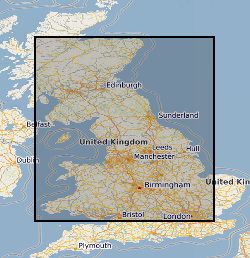
THIS DATASET HAS BEEN WITHDRAWN **This dataset was created for the "Britain beneath our feet" atlas using information extracted from the Geochemical Baseline Survey Of The Environment (G-BASE) For The UK . For Fluoride in Stream Water data please see Geochemical Baseline Survey Of The Environment (G-BASE) For The UK ** Geochemical Baseline Survey of the Environment (G-BASE) coverage for Fluoride in stream water. The G-BASE programme involves systematic sampling and the determination of chemical elements in samples of stream sediment, stream water and, locally, soil, to build up a picture of the surface chemistry of the UK. The average sample density for stream sediments and water is about one site per 1.5-2km square. Analytical precision is high with strict quality control to ensure countrywide consistency. Results have been standardised to ensure seamless joins between geochemical sampling campaigns. The data provide baseline information on the natural abundances of elements, against which anomalous values due to such factors as mineralisation and industrial contamination may be compared. Published in Britain beneath our feet atlas.
-
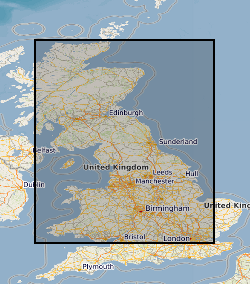
THIS DATASET HAS BEEN WITHDRAWN **This dataset was created for the "Britain beneath our feet" atlas using information extracted from the Geochemical Baseline Survey Of The Environment (G-BASE) For The UK . For acidity of stream water data please see Geochemical Baseline Survey Of The Environment (G-BASE) For The UK ** Geochemical Baseline Survey Of The Environment (G-BASE) coverage for acidity of stream water. The G-BASE programme involves systematic sampling and the determination of chemical elements in samples of stream sediment, stream water and, locally, soil, to build up a picture of the surface chemistry of the UK. The average sample density for stream sediments and water is about one site per 1.5-2km square. Analytical precision is high with strict quality control to ensure countrywide consistency. Results have been standardised to ensure seamless joins between geochemical sampling campaigns. The data provide baseline information on the natural abundances of elements, against which anomalous values due to such factors as mineralisation and industrial contamination may be compared.
-
This data set consists of various hydrological measurements taken over two years of instrumental monitoring in fields of willow and Miscanthus crops from a study as part of the NERC Rural Economy and Land Use (RELU) programme. Future policies are likely to encourage more land use under energy crops: principally willow, grown as short rotation coppice, and a tall exotic grass Miscanthus. These crops will contribute to the UK's commitment to reduce CO2 emissions. However, it is not clear how decisions about appropriate areas for growing the crops, based on climate, soil and water, should be balanced against impacts on the landscape, social acceptance, biodiversity and the rural economy. This project integrated social, economic, hydrology and biodiversity studies in an interdisciplinary approach to assessing the impact of converting land to Miscanthus grass and short-rotation coppice (SRC) willows. Two contrasting farming systems were focused on: the arable-dominated East Midlands; and grassland-dominated South West England. This data set consists of various hydrological measurements taken over two years of instrumental monitoring in fields of both crops. GIS and biodiversity survey datasets are also available. The public attidues questionnaire data from this study are available at the UK Data Archive under study number 6615 (see online resources). Further documentation for this study may be found through the RELU Knowledge Portal and the project's ESRC funding award web page (see online resources).
-
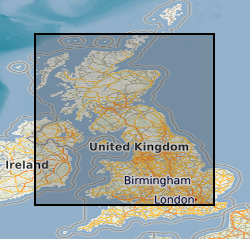
THIS DATASET HAS BEEN WITHDRAWN **This dataset was created for the "Britain beneath our feet" atlas using information extracted from the Geochemical Baseline Survey Of The Environment (G-BASE) For The UK . For Uranium in stream sediment data please see Geochemical Baseline Survey Of The Environment (G-BASE) For The UK ** Geochemical Baseline Survey Of The Environment (G-BASE) coverage for Uranium in stream sediment. The G-BASE programme involves systematic sampling and the determination of chemical elements in samples of stream sediment, stream water and, locally, soil, to build up a picture of the surface chemistry of the UK. The average sample density for stream sediments and water is about one site per 1.5-2km square. Analytical precision is high with strict quality control to ensure countrywide consistency. Results have been standardised to ensure seamless joins between geochemical sampling campaigns. The data provide baseline information on the natural abundances of elements, against which anomalous values due to such factors as mineralisation and industrial contamination may be compared.
-
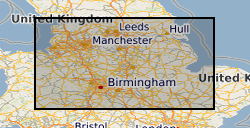
THIS DATASET HAS BEEN WITHDRAWN **This dataset was created for the "Britain beneath our feet" atlas using information extracted from the Geochemical Baseline Survey Of The Environment (G-BASE) For The UK . For Arsenic in soil data please see Geochemical Baseline Survey Of The Environment (G-BASE) For The UK ** Geochemical Baseline Survey Of The Environment (G-BASE) coverage for arsenic in soil. The G-BASE programme involves systematic sampling and the determination of chemical elements in samples of stream sediment, stream water and, locally, soil, to build up a picture of the surface chemistry of the UK. The average sample density for stream sediments and water is about one site per 1.5-2km square. Analytical precision is high with strict quality control to ensure countrywide consistency. Results have been standardised to ensure seamless joins between geochemical sampling campaigns. The data provide baseline information on the natural abundances of elements, against which anomalous values due to such factors as mineralisation and industrial contamination may be compared. Published in Britain beneath our feet atlas.
-
This data set consists of the tabulated results of bird surveys on Peak District farms and moorlands. Bird abundance and distribution on Peak District farms and moorlands, 2007-2008 The study is part of the NERC Rural Economy and Land Use (RELU) programme. The project used the Peak District National Park as a case study to examine the impact of hill farming practices on upland biodiversity (using birds as an indicator group); how hill farms were responding to ongoing and future changes to policies and prices; what this would in turn imply for upland biodiversity; what the public wanted from upland ecosystems and how policies could be designed better to deliver public goods from hill farms. To answer these questions, the project team conducted ecological and economic surveys on hill farms; used survey results to parameterise ecological and economic models of this farming system; developed new ways to integrate these into coupled ecological and economic models and paid particular attention to interactions across farm boundaries; used the models to evaluate the performance of existing policies and to test designs that could lead to more effective policies; and conducted a range of choice experiments with different cross-sections of the general public to evaluate their preferences for upland landscapes. Choice experiment, socio-economic survey and model data from this study are available at the UK Data Archive under study number 6363 (see online resources). Further documentation for this study may be found through the RELU Knowledge Portal and the project's ESRC funding award web page (see online resources).
-
This dataset consists of ecology data from 16 paired field sites; each pair consisting of an organic and conventional farm. A multiscale sampling design was employed to assess the impact of (i) location-within-field (field margin vs. edge vs. centre), (ii) crop type (arable cereal vs. permanent pasture), (iii) farm management (organic vs. conventional) and (iv) landscape-scale management (landscapes that contained low or high fractions of organic land) on a wide range of taxa. Studied taxa include birds, insect pollinators (hoverflies, bumblebees and solitary bees), epigeal arthropods, aphids and their natural enemies, earthworms and plants. The study is part of the NERC Rural Economy and Land Use (RELU) programme. A move to organic farming can have significant effects on wildlife, soil and water quality, as well as changing the ways in which food is supplied, the economics of farm business and indeed the attitudes of farmers themselves. Two key questions were addressed in the SCALE project: what causes organic farms to be arranged in clusters at local, regional and national scales, rather than be spread more evenly throughout the landscape; and how do the ecological, hydrological, socio-economic and cultural impacts of organic farming vary due to neighbourhood effects at a variety of scales. The research was undertaken in 2006-2007 in two study sites: one in the English Midlands, and one in southern England. Both are sites in which organic farming has a 'strong' local presence, which we defined as 10 per cent or more organically managed land within a 10 km radius. Potential organic farms were identified through membership lists of organic farmers provided by two certification bodies (the Soil Association and the Organic Farmers and Growers). Most who were currently farming (i.e. their listing was not out of date) agreed to participate. Conventional farms were identified through telephone listings. Respondents' farms ranged in size from 40 to 3000 acres, with the majority farming between 100 and 1000 acres. Most were mixed crop-livestock farmers, with dairy most common in the southern site, and beef and/or sheep mixed with arable in the Midlands. In total, 48 farms were studied, of which 21 were organic farmers. No respondent had converted from organic to conventional production, whereas 17 had converted from conventional to organic farming. Twelve of the conventional farmers defined themselves as practicing low input agriculture. Farmer interview data from this study are available at the UK Data Archive under study number 6761. Soil data from agricultural land under differing crop and management regimes,are also available. Further documentation for this study may be found through the RELU Knowledge Portal and the project's ESRC funding award web page (see online resources).
-
This dataset consists of a survey of the vegetational impacts of deer in 20 forests as part of the NERC Rural Economy and Land Use (RELU) programme. It is widely accepted, at least in principle, that most kinds of natural resources are best handled collaboratively. Collaborative management avoids conflict and enhances the efficiency with which the resource is managed. However, simply knowing that collaboration is a good idea does not guarantee that collaboration can be achieved. In this project, the researchers have addressed issues of conflict and collaboration in ecological resource management using the example of wild deer in Britain. Deer are an excellent example since they highlight problems around ownership and because they offer both societal benefits and drawbacks. Wild deer are not owned, though the land they occupy is. As deer move around, they usually cross ownership boundaries and thus provoke potential conflicts between neighbouring owners who have differing management goals. Deer themselves are valued and a key component of the natural environment, but their feeding commonly limits or prevents woodland regeneration and can thus be harmful to ecological quality. Deer provide jobs but they also provoke traffic accidents. This study used a variety of methods from across the natural and social sciences, including choice experiments, semi-structured interviews with individuals and focus groups. It also incorporated the use of participatory GIS to map deer distributions and habitat preferences in conjunction with stakeholders. The study confirmed conventional wisdom about the importance of collaboration. However, it also showed that there were many barriers to achieving effective collaboration in practice, such as contrasting objectives, complex governance arrangements, power imbalances and personal relationships. Mechanisms for enhancing collaboration, such as incentives and incorporating deer within broader landscape management objectives, were examined. Though these proposals were worked out for the case of deer, they are likely to be applicable much more widely and should be considered in other cases of disputed or rapidly changing ecological resource management. This dataset consists of a survey of the vegetational impacts of deer in 20 forests. The interview and focus group transcripts, and the choice experiment datasets from this study are available at the UK Data Archive under study number 6545 (see online resources). Further documentation for this study may be found through the RELU Knowledge Portal and the project's ESRC funding award web page (see online resources).
-
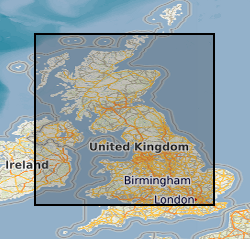
THIS DATASET HAS BEEN WITHDRAWN **This dataset was created for the "Britain beneath our feet" atlas using information extracted from the Geochemical Baseline Survey Of The Environment (G-BASE) For The UK . For Copper in Stream Sediment data please see Geochemical Baseline Survey Of The Environment (G-BASE) For The UK ** Geochemical Baseline Survey Of The Environment (G-BASE) coverage for copper in stream sediment. The G-BASE programme involves systematic sampling and the determination of chemical elements in samples of stream sediment, stream water and, locally, soil, to build up a picture of the surface chemistry of the UK. The average sample density for stream sediments and water is about one site per 1.5-2km square. Analytical precision is high with strict quality control to ensure countrywide consistency. Results have been standardised to ensure seamless joins between geochemical sampling campaigns. The data provide baseline information on the natural abundances of elements, against which anomalous values due to such factors as mineralisation and industrial contamination may be compared. Published in Britain beneath our feet atlas.
 NERC Data Catalogue Service
NERC Data Catalogue Service